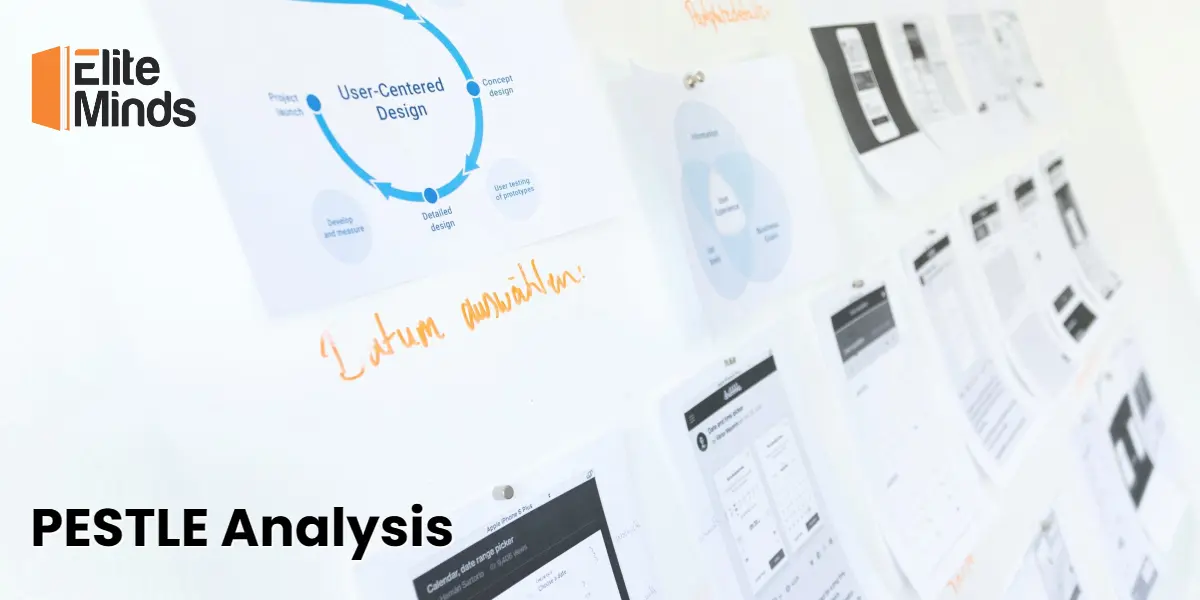PESTLE Analysis

Table of Contents
- PESTLE Analysis Definition
- How to use PESTLE Analysis?
- PESTLE and SWOT Analysis
- Conclusion
PESTLE analysis is an external environmental analytical approach to investigate external business factors. These factors are, in general, out of control to the businesses. And, the analysis of these business factors results either in threats or opportunities to the organization.
PESTLE Analysis Definition
PESTLE analysis provides a framework for investigating and analyzing the external environment for an organization. The framework identifies six key areas that should be considered when attempting to identify the sources of change. These six areas are:
- Political.
Examples of political factors that can be considered in the PESTLE analysis could be a potential change of government, with the corresponding changes to policies and priorities, or the introduction of a new government initiative.
- Economic.
Examples of economic factors could be the level of growth within an economy, or market confidence in the economies within which the organization operates.
- Socio-Culture.
Socio-cultural factors are those arising from customers or potential customers. These changes can often be subtle, and they can be difficult to predict or identify until there is a major impact. Examples could be demographic issues, or consumer behavior patterns.
- Technological.
In PESTLE analysis, this area covers factors arising from the development of technology. There are two types of technological change: there can be developments in IT, and there can be developments in technology specific to an industry or market, for example enhancements to manufacturing technology.
- Legal.
Legal compliance has become such an important issue during this period that many business analysis assignments have been carried out for the purpose of ensuring compliance with particular laws or regulations. Some legal issues may originate from the national government but others.
One key issue when considering the legal element of the PESTLE analysis is to recognize laws that have an impact upon the organization even though they originate from countries other than that in which the organization is based. This situation may occur where an organization is operating within the originating country or working.
- Environmental.
Examples of factors arising from concerns about the natural: environment, in other words the ‘green’ issues, include increasing concerns about packaging and the increase of pollution.
How to Use PESTLE Analysis?
The PESTLE analysis technique is usually used in a workshop where several ideas and opinions can be sought. Representatives from a range of functions in the organization should be present so that they can provide specialist information.
For example, legal representatives would be able to provide information about changes to relevant laws and regulations. It is a good idea for departmental representatives to research any aspects that may impact the organization prior to carrying out a PESTLE analysis.
When using the PESTLE technique, it is important to recognize that we are looking for factors that fit two criteria: they are outside the sphere of influence (i.e. control) of the organization, and they will have some level of impact upon it.
It is essential to appreciate the importance of these criteria when using the technique. A common error is to identify a potential course of action for the organization rather than highlight an external factor that will have an impact upon it.
These external factors are shown as opportunities and threats in a SWOT analysis, so when using PESTLE analysis the focus should be on identifying external factors and not on deciding what to do about them.
Another important aspect to recognize when using PESTLE analysis is that its objective is to identify factors that could affect the organization. It is therefore of little benefit to spend time considering whether a government initiative should be filed under ‘Political’, or whether ‘Legal’ would be preferable. PESTLE analysis technique is invaluable in identifying factors to be considered, and if possible, to be dealt with by taking action.
PESTLE and SWOT Analysis?
PESTLE and SWOT analysis refers to two different approaches which are useful for evaluating an idea or plan in advance. Each of these is an acronym which forms all of the aspects of the analytical approach itself.
PESTLE stands for political, economic, social, technological, legal and environmental. Each of these is an aspect of the environment which may affect a business plan or project idea. Evaluating each of these and their potential effects on your idea can help you plan ahead.
SWOT stands for strengths, weaknesses, opportunities and threats. Each part of the SWOT analysis is either an inherent characteristic of your project or business idea or an external consideration. A SWOT analysis has a mixture of internal and external factors to consider. Strengths and weaknesses are internal factors to the project or business idea itself, whereas opportunities and threats are external.
The major difference between these two techniques is the nature of the factors which they consider. A SWOT analysis has a mixture of internal and external factors. Conversely, a PESTLE analysis only considers external factors and therefore ignores the potential advantages and disadvantages which are inherent to the project or business idea itself.
Although a PESTLE analysis goes into more detail regarding the specific nature of the factors it considers, a SWOT analysis is typically more comprehensive.
Although the technique is usually seen as one where the external environment is considered, PESTLE analysis may also be used to analyze influences operating within an organization. This situation arises where issues or ideas concerning a particular function or department are under examination.
An analysis of the external factors that may impact upon that department can help in a number of ways, from clarifying reasons for change to identifying options. For example, if a PESTLE analysis is carried out with regard to the human resources functions within the organization there may be factors within the wider organization that fit our two criteria – they are outside the function’s control and are likely to impact upon its work.
Perhaps there have been poor company results and the finance department has recommended to senior management that recruitment and training should cease for a six-month period. This decision will affect the work, but will be outside the control, of the human resources function so it is an external factor to the department but an internal factor to the business as a whole.
Conclusion
As a conclusion, PESTLE stands for political, economic, social, technological, legal and environmental. Each of these is an aspect of the environment which may affect a business plan or project idea. Evaluating each of these and their potential effects on your idea can help you plan ahead.
A PESTLE analysis is a good way of evaluating the external environment in which your business or project is going to exist. All of the elements of the analysis are potentially impactful external factors which could affect the feasibility of an idea.
I hope this blog has sufficiently answered your all queries related to PESTLE Analysis. Good Luck for your PMI PBA® Certification Exam. Our online course is one place which has everything to crack the exam in the first attempt. The course also gives you end to end 24/7 trainer assistance.
References
Business analysis techniques by James Cadle, second edition



.jpg)
.jpg)
.jpg)


